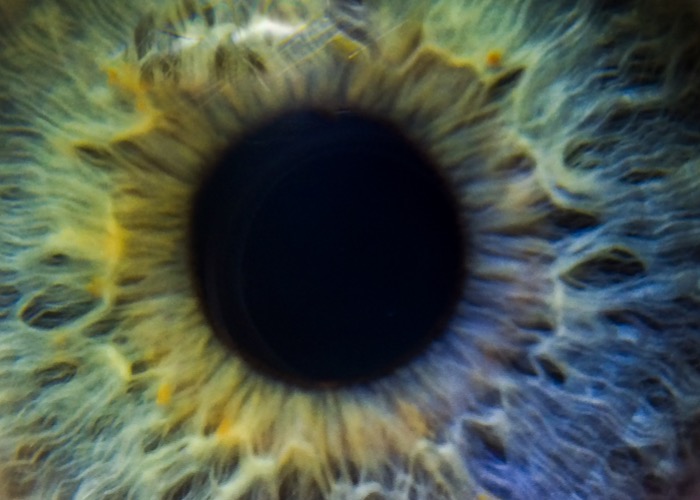The windows to the soul have it
In Older care
Follow this topic
Bookmark
Record learning outcomes

Modern lifestyles are taking their toll on the nation’s eye health. According to the RNIB, at least half of all cases of sight loss in the UK are avoidable, caused by age-related macular degeneration, cataracts, glaucoma and diabetic eye disease. Many of these conditions don’t cause any symptoms in their early stages and are only picked up during routine eye checks.
In September 2019, Eye Health UK called on opticians to include lifestyle advice on their optical prescriptions in a bid to cut the number of people in the UK living with avoidable sight loss. Lifestyle advice includes making simple changes to a patient’s diet, smoking habits and activity levels, alongside signposting them to the support they need. This could provide various opportunities for community pharmacies to link up with local opticians to offer relevant over-the-counter products, pharmacy services and lifestyle advice.
The effects of rising screen usage
With the rising use of computers and digital devices, many people are concerned about the effects of screen usage on their eyes, both in the long term and short term. According to National Eye Health Week (23 to 29 September 2019), up to 85 per cent of screen users say they regularly suffer screen fatigue, including headaches, sore or tired eyes and problems with close-up and long-distance vision.
Max Halford, minor eye conditions-accredited eye care practitioner and clinical lead for the Association of British Dispensing Opticians, says patients often ask opticians for advice about these symptoms. “Patients often notice that their distance vision becomes blurry or they are having more problems focusing from far distance to close work after computer or digital device use,” he says. “However, most symptoms are transient and can be reduced by regular breaks away from the screen.”
A study of 2,000 adults by Hycosan and Optase Eye Care in April 2019 found that more than half of those questioned believe their working environment, including lighting and air conditioning as well as screens, had a negative effect on their eyes. As a result, 27 per cent have adjusted the computer brightness and text settings and half take regular breaks in order to limit the damage to their eyes. One quarter even started wearing glasses for monitor use and two in 10 have tried lubricating eye drops.
“Screen usage will not change your prescription or need for glasses, but it can affect your blink rate,” says eye specialist Professor Dan Reinstein. “Reduced blink rate leads to dry, red, uncomfortable eyes and even blurred vision. This is now called computer vision syndrome. Studies have shown that blink rate goes down to less than 10 blinks per minute during screen usage from a normal rate of about 25 blinks per minute. This means that the tear film system of the eye can be disrupted.”
Optrex recently revamped its Screen Eyes creative on YouTube to appeal to a younger audience to raise the awareness of dry and irritated eyes. “The campaign launched in National Eye Health Week and will be running until April next year, supported on TV and YouTube,” says Sandra Toivo, brand manager for Optrex. “Our Optrex ActiMist double action spray contains liposomes that migrate to the edges of your eye and get distributed over your eye as you blink, which helps replenish the lipid layer and helps to prevent evaporation of the tear film.”
Blink rate goes down to less than 10 blinks per minute during screen usage from a normal rate of about 25 blinks per minute
If pharmacy customers notice that their vision has changed in any way, they shouldn’t assume this is due to computer usage, however. Dr Louise Gow, specialist lead for eye health at the RNIB, says there is no evidence to link usage of screens with permanent harm to the eyes. All effects are temporary, she says. “There is a lot said about blue light hazard, but it is now accepted that the level of blue light hazard is so low in these devices that its impact is minimal,” she says. “However, the amount of time we spend on close-work tasks on screens in and out of work is increasing and the tiredness or so-called digital eye strain associated with this is not due to the blue light, but to the intensity of the work. The main symptom is temporary blurring when you look up and away from the device and discomfort. The 20-20-20 rule states that you should look away from the screen for 20 seconds every 20 minutes to the distance of 20 yards. In other words, every 20 minutes look away at a distant object briefly to relax the muscles and blink.”
Regular eye checks are good advice
Any changes in vision should always be assessed by an optician or optometrist. “The importance of regular eye checks cannot be stressed enough,” says Mr Halford. “Optometrists and opticians are trained to offer advice on all types of eye problems and can offer a range of solutions, be it spectacles, contact lenses, eye drops and gels and general ocular advice. Sudden changes in vision, flashing lights or the onset of floaters might be the signs of underlying problems, and patients should always seek advice as soon as possible from their practitioner.”
How often people should have an eye check varies, depending on their age, vision and overall health. Dr Gow stresses that everyone should have an eye examination at least every two years. People with diabetes are particularly at risk of eye problems, so should also attend an annual retinal screening appointment. Other people who should have eye checks more often include the over-70s and children under 16, those with glaucoma or a family history of the condition, learning disabilities, amblyopia or a high level of myopia, and people taking certain medicines, such as long term steroids.
Dr Gow says that, in general, changes that occur in vision over the space of a day or two should be investigated urgently that same day. “But if they have gradually occurred over the space of a few months, then investigation within a week or so at a routine eye examination should be recommended,” she says.
Not enough tears
Dry eye syndrome occurs when the eyes don’t make enough tears, or the tears evaporate too quickly. According to the DEWS II (Tear Film & Ocular Surface Society Dry Eye Workshop II) report on dry eye syndrome, published in The Ocular Surface journal (July 2017), risk factors include computer use, contact lens wear, the menopause, environmental factors, allergies, meibomian gland dysfunction, chronic inflammatory conditions or side effects of medicines.
If patients are experiencing symptoms, they should have this properly assessed by an optometrist. “Dry eye is a complicated syndrome with as many causes as there are products available to help,” says Mr Halford. “As a general rule, a good lubricating eye drop or preferably a gel will alleviate symptoms. It is great advice to suggest omega-3 fatty acid supplements, as they have a demonstrably positive effect for many patients. Advice from a specialist dry eye practitioner who can ascertain the underlying cause is well worth it for many people who have been unsuccessful with OTC remedies.”
To encourage self care, Altacor has made a big push into community pharmacy this year. “We feel that the NHS initiative to self care for dry eye is a perfect opportunity for this sector,” says Oliver Wooding, global marketing manager at Altacor. “For example, if you have to pay for your prescriptions, you might as well buy your dry eye products over the counter, especially if they are priced around the £6 to £9 mark, such as our Clinitas 0.2% eye drops. Pharmacists should be able to give patients advice on how to address any environmental factors and what products to recommend. Clinitas hot eye compress’s combination of warming, massage, cleansing and lubrication is the best way to tackle blepharitis, eye lid crusting and blocked meibomian glands.”
People who use screens all the time should consider regular eyelid margin care to ensure that the oil is kept moving
Compliance can be a big issue in the management of dry eye syndrome, so finding the right product is key. Dr Gow says that community pharmacists should check that patients can self-administer their drops or gel and discuss the importance of ongoing treatment. “Instruct patients that their symptoms will gradually ease over the first month of treatment, so they don’t expect it to miraculously resolve,” she says. “Even when the symptoms have gone, they should continue unless an eye health professional tells them otherwise. It may be that the frequency of drops can be reduced with time but not stopped in most cases. Artificial tears and gels are an important part of this treatment, but for some patients warm compresses, changes in lifestyle and treatment of underlying conditions, such as rosacea and blepharitis, may be more important.”
Not forgetting eyelids
According to the DEWS II report, eyelid hygiene can help in the management of dry eye syndrome. Lid scrubs using a mild dilution of baby shampoo applied with a swab or cotton bud have been the most widely accepted therapy, but dedicated lid cleansing products may be more effective and better tolerated.
“When we blink, we pump eyelid oil, called meibomian oil, out from the eyelid margins,” says Professor Reinstein. “This oil creates an oil slick that stabilises the tears on the surface of the cornea and keeps it from evaporating too quickly. People who use screens all the time should consider regular eyelid margin care to ensure that the oil is kept moving and not stagnating. This includes all the treatments that are related to meibomian gland dysfunction. Eyelid heating pads used once or twice a day are an example of this.”
Demodex mite infestation can cause intractable blepharitis and is often associated with dry eye symptoms. Other symptoms include itching and burning of the eyes and lids, foreign body sensation and fluctuating blurry vision. Scope’s new Optase TTO eye lid cleansing gel is a unique formulation of tea tree oil, sodium hyaluronate and pro-vitamin B5. It has anti-inflammatory and moisturising action and the tea tree oil concentration is clinically proven to repel demodex mites.
P3pharmacy category panel
 Sarina Mughal, Day Lewis, London SW1
Sarina Mughal, Day Lewis, London SW1
“Customers come to us all year round with eye complaints. Dry eye is a common query and we keep a variety of brands to help with this, including HyLo and Hycosan. We also sell the whole Optrex range. BlephaClean wipes are popular for eye infections. We get lots of queries about itchy eyes and allergies and questions about which products can be used without taking out contact lenses. Put products for dry eyes on the counter and make link sales with contact lens solutions. Tell customers they can buy these without a prescription.”
 Lindsey Fairbrother, Goodlife Pharmacy, Hatton, Derbyshire
Lindsey Fairbrother, Goodlife Pharmacy, Hatton, Derbyshire
“Eye health has become more popular since the minor ailment scheme was introduced. The most common queries are about conjunctivitis and red eye, but people also ask about shingles in the eye, so it’s important to be alert to this. We sell mainly own brands, although we do sell Opticrom for allergic conjunctivitis. Customers seem to like the new sprays for dry eye but it’s expensive. Another trend we’ve seen is for cleansing products to treat blepharitis. Put eye health products on their own shelf and use clear signage.”
 Gareth Evans, Wansford Pharmacy, Peterborough
Gareth Evans, Wansford Pharmacy, Peterborough
“Eye health is a popular category, especially in the summer for hayfever symptoms. In winter, we have more customers asking about conjunctivitis. Most ask us directly for advice and a consultation. Dry eyes is a growing sector, especially now the NHS is trying to cut down on prescribing OTC treatments. It’s a big opportunity for pharmacy. We sell mostly generic eye care products, but we are now offering Systane. There is a trend to purchase and ask advice from the pharmacy. The new five-year deal and CPCS should boost this.”
